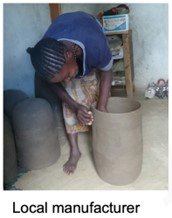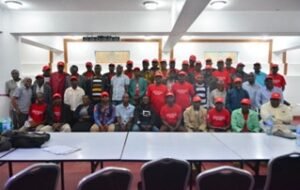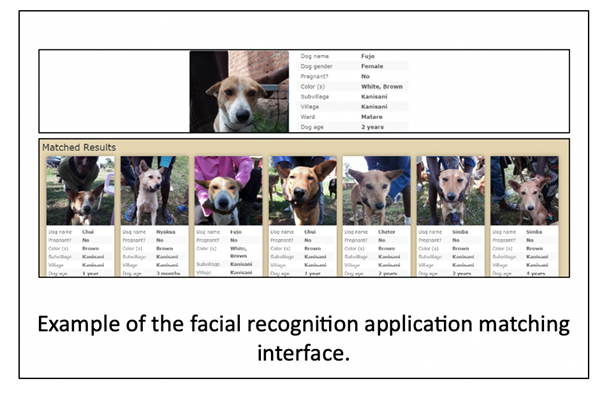
At Global Health Tanzania, we are committed to developing inexpensive practical solutions for rabies elimination, particularly in Africa’s challenging rural landscapes. Our groundbreaking work in vaccine thermotolerance and integrated health interventions is transforming how we combat rabies and improve public health.
Vaccine Thermotolerance Breakthrough
In 2016, Felix Lankester’s research team made a significant discovery: the Nobivac® Rabies vaccine retains its effectiveness even in warmer conditions. They found that the vaccine remains potent when stored at 25°C for up to six months or at 30°C for up to three months, performing just as well as vaccines kept in standard cold storage (2-8°C) (read more). This breakthrough addresses the major challenge of maintaining cold chains during mass vaccination campaigns in remote areas where cold chain infrastructures are limited.
Building on this success, further research by Lankester and Alicia Davis in 2019 and 2021 conducted in Tanzania’s Arusha and Manyara regions examined the integration of multiple health interventions to enhance their impact (read more), and assessed the Social, Economic, and Environmental Drivers of Zoonoses (read more). They tested the simultaneous delivery of mass dog rabies vaccinations and deworming programs targeting soil-transmitted helminths. The results were promising: communities embraced this combined approach, appreciating the efficiency of receiving “two-for-one” health treatments. Participation rates were high, similar to when the programs were run separately. The integrated approach significantly cut costs, reducing per-treatment expenses by 33% for deworming and 16% for rabies vaccination, while also saving time. Importantly, this method successfully reached children both in and out of school.
These findings highlight the transformative potential of innovations like vaccine thermotolerance and integrated health delivery platforms. By addressing logistical and financial barriers, these strategies are paving the way for effective zoonotic disease control and improved health outcomes in hard-to-reach communities.
Innovative Passive Cooling Device: The Zeepot
Dr. Ahmed Lugelo, a veterinary researcher from Global Health Tanzania, collaborated with local communities in northern Tanzania’s Mara region to develop an innovative cooling solution called the “Zeepot.” This Passive Cooling Device was designed to store rabies vaccines without electricity, using local expertise and readily available materials. The goal was to support expanded rabies control efforts through mass dog vaccination (MDV) in areas lacking reliable power and cold storage infrastructure. Testing showed impressive results: the Zeepot Clay prototype-maintained temperatures below 26°C throughout a year-long trial, even when outside temperatures soared above 42°C. At just $11 per unit with a three-year lifespan, it offers an affordable and practical solution for vaccine storage in resource-limited settings (read more).
A follow-up study evaluated the potency of the thermotolerant Nobivac® Rabies vaccine after being stored in the Zeepot under real-world conditions with natural temperature variations. The study also examined how factors like dogs’ health and age affected their immune response. The results were encouraging: vaccines stored in the Zeepot were just as effective as those kept in traditional cold storage, with 85% of dogs in both groups developing adequate immunity. However, they found that dogs in poor health were less likely to respond well to vaccination. These findings confirm that the Zeepot is an effective tool for maintaining vaccine quality and could help expand vaccination programs’ reach (read more).
The Success of Decentralized Vaccination
The journey towards a rabies-free future took a significant leap forward with the innovative efforts to demonstrate the thermostability of a rabies vaccine and the development of the Zeepot. These advancements inspired a flexible approach to rabies vaccine delivery. In 2020, a groundbreaking randomized controlled trial of MDV, “Eliminating Human Rabies: Impact of Enhanced Vaccination Coverage,” was launched with support from National Institute of Health (NIH) and MSD Animal Health. This trial aimed to determine if a decentralized, continuous MDV strategy could be more cost-effective and achieve better coverage than the traditional centralized, team-led approach.
forward with the innovative efforts to demonstrate the thermostability of a rabies vaccine and the development of the Zeepot. These advancements inspired a flexible approach to rabies vaccine delivery. In 2020, a groundbreaking randomized controlled trial of MDV, “Eliminating Human Rabies: Impact of Enhanced Vaccination Coverage,” was launched with support from National Institute of Health (NIH) and MSD Animal Health. This trial aimed to determine if a decentralized, continuous MDV strategy could be more cost-effective and achieve better coverage than the traditional centralized, team-led approach.
In this innovative decentralized strategy, vaccines are stored locally at the ward level. Ward-based animal health professionals known in the program as Rabies Coordinators (RC), supported by community leaders known in the program as One Health Champion (OHC), plan and deliver vaccinations year-round across all villages within their wards. This extensive trial, spearheaded by Tanzania’s Ministry of Livestock and Fisheries in collaboration with Washington State University, the University of Glasgow, and the Ifakara Health Institute, encompassed 428 villages across the Mara region and was executed through nine Local Government Authorities (LGAs).
By December 2024, over 270,000 dogs had been vaccinated in the study region. The field results were remarkable: the decentralized approach achieved twice the vaccination coverage of the traditional annual pulse vaccination method. This impressive coverage met the herd immunity threshold necessary to halt rabies transmission, effectively bringing the disease under control. Although the program officially concluded in October 2023, ongoing efforts aim to sustain its success. These include engaging with LGAs to take on leadership roles, collaborating with the Ministry of Livestock and Fisheries for program coordination and monitoring, partnering with vaccine importers, and reaching out to potential donors to secure future funding.
The impact on public health has been profound. Prior to the program, the Mara region experienced around 2,500 animal bite cases annually, with a 1% dog rabies rate leading to 20-40 human deaths each year. Following the implementation of mass dog vaccination, human rabies deaths plummeted to just eight cases over three years. This dramatic reduction underscores the program’s effectiveness in safeguarding public health and controlling rabies in the region.
Our One Health Champion: Ensuring a Rabies-Free Community
 Meet our dedicated OHCs, who plays a crucial role in managing and coordinating all MDV activities in their village. Working closely with the ward-based RC, our OHC ensures that every step of the vaccination process runs smoothly and efficiently. The journey begins with the Champion teaming up with the ten-cell leader (locally known as Balozi), to estimate the number of dogs in each area. This careful estimation, following specific instructions provided in our guidelines, helps to map out the entire dog population.
Meet our dedicated OHCs, who plays a crucial role in managing and coordinating all MDV activities in their village. Working closely with the ward-based RC, our OHC ensures that every step of the vaccination process runs smoothly and efficiently. The journey begins with the Champion teaming up with the ten-cell leader (locally known as Balozi), to estimate the number of dogs in each area. This careful estimation, following specific instructions provided in our guidelines, helps to map out the entire dog population.
With this vital information in hand, our OHC then informs the RC about the estimated number of dogs living in the village. This data is essential for planning effective vaccination clinics. But the OHC role doesn’t stop there; they actively engage with the community, sensitizing villagers about the upcoming vaccination activities to ensure everyone is prepared and informed. Ongoing monitoring is another key responsibility. Alongside the ten-cell leader, our OHC keeps a watchful eye on the village’s dog population. They identify dogs that have not yet been vaccinated, note pregnant females, and track litters that require vaccination. This vigilant monitoring helps in maintaining a healthy dog population.
To maximize participation, our OHC carries out extensive advertising campaigns before each vaccination drive. During the MDV activities, they meticulously record data on vaccinated animals in the Vaccination Register, ensuring that all records are accurate and up-to-date.
Every week, our OHC prepares a detailed report on the number of dogs needing rabies vaccination for the upcoming clinics. This report, which also covers other rabies-related issues, is discussed with the RC during their weekly update phone calls.
Our One Health Champion’s dedication and hard work are vital in the fight against rabies. Through their efforts, they ensure that the village remains safe and healthy, demonstrating the true spirit of community and care.
Empowering Communities: Strengthening Rabies Control in the Mara Region
In our quest to eliminate rabies across the Mara region, we have made significant strides in building robust infrastructures, developing innovative tools, and enhancing local capacities. These efforts are key to the success and sustainability of our MDV campaigns.
Innovative Digital Solutions
 We’ve launched a dynamic web platform that provides key stakeholders with real-time access to data generated by our project. Alongside this, a mobile application has been developed to assist District Livestock and Fisheries Officers (DLFOs) in monitoring vaccination progress within their jurisdictions. Our interactive map illustrates ward-level vaccination coverage with color shading, and the accompanying bar graph displays the total number of dogs vaccinated. You can refer to the scale legend in the lower right-hand corner of the map for detailed insights.
We’ve launched a dynamic web platform that provides key stakeholders with real-time access to data generated by our project. Alongside this, a mobile application has been developed to assist District Livestock and Fisheries Officers (DLFOs) in monitoring vaccination progress within their jurisdictions. Our interactive map illustrates ward-level vaccination coverage with color shading, and the accompanying bar graph displays the total number of dogs vaccinated. You can refer to the scale legend in the lower right-hand corner of the map for detailed insights.
Local Training and Vaccine Storage Solutions
 Recognizing the need for effective vaccine storage, we have trained local residents to manufacture the Zeepots. These locally produced devices maintain the safety and efficacy of rabies vaccines at low temperatures within their respective villages, addressing the challenges posed by inadequate cold chain systems in the livestock sector.
Recognizing the need for effective vaccine storage, we have trained local residents to manufacture the Zeepots. These locally produced devices maintain the safety and efficacy of rabies vaccines at low temperatures within their respective villages, addressing the challenges posed by inadequate cold chain systems in the livestock sector.
Community Mobilization and Training
 Over the past three years, we’ve conducted extensive training sessions to equip key personnel with the skills needed for cost-effective vaccination campaigns. We have trained 9 DLFOs, 9 Senior Livestock Officers, 65 RCs, and 240 OHCs. These dedicated individuals now lead rabies control efforts in their communities, leveraging their expertise to advocate for and implement vaccinations. To date, over 350,000 doses of rabies vaccine have been distributed to 9 Local Government Authorities (LGAs). Rabies Coordinators also received essential vaccination supplies, including cold boxes, vaccination cards, syringes, needles, and implementation manuals, enhancing their effectiveness in the field.
Over the past three years, we’ve conducted extensive training sessions to equip key personnel with the skills needed for cost-effective vaccination campaigns. We have trained 9 DLFOs, 9 Senior Livestock Officers, 65 RCs, and 240 OHCs. These dedicated individuals now lead rabies control efforts in their communities, leveraging their expertise to advocate for and implement vaccinations. To date, over 350,000 doses of rabies vaccine have been distributed to 9 Local Government Authorities (LGAs). Rabies Coordinators also received essential vaccination supplies, including cold boxes, vaccination cards, syringes, needles, and implementation manuals, enhancing their effectiveness in the field.
Advanced Facial Recognition Technology
In 2020, we introduced a facial recognition app to assist RCs in registering and tracking dogs during vaccination campaigns. This app records critical details such as the owner’s name, dog’s name, age, sex, reproductive status, and a facial image of the dog. This technology ensures that previously vaccinated dogs are identified, enabling comprehensive coverage during follow-up visits or supplementary campaigns. Currently, the app is employed by both the Rabies Coordinators involved in the randomized controlled trial and the Serengeti Health Initiative team which conducts annual team-led vaccinations around Serengeti National Park. Data collected through the app are processed to identify vaccinated dogs, streamlining efforts to maintain high vaccination coverage in target communities. These initiatives exemplify our holistic approach to community engagement and capacity building, laying a strong foundation for sustainable rabies control in the region.

Ongoing Program Evaluation
 In February 2022, a high-level delegation from the Ministry of Livestock and Fisheries and the Prime Minister’s Office-Disaster Management Department visited our vaccination program to assess its progress and operational impact. This visit also aimed to raise awareness among regional and district decision-makers about rabies prevention, showcasing the latest research findings and updates on field vaccination activities.
In February 2022, a high-level delegation from the Ministry of Livestock and Fisheries and the Prime Minister’s Office-Disaster Management Department visited our vaccination program to assess its progress and operational impact. This visit also aimed to raise awareness among regional and district decision-makers about rabies prevention, showcasing the latest research findings and updates on field vaccination activities.
Building on this momentum, a collaborative assessment was conducted in July 2022 in Musoma, Mara region in partnership with DLFOs. This evaluation reviewed the progress of vaccination efforts across the LGAs, serving as a platform to identify challenges encountered during the campaign and to propose practical solutions for improving implementation.
 These evaluations underscore our commitment to transparency, stakeholder engagement, and continuous enhancement of rabies vaccination strategies. We remain dedicated to fostering a safer environment for both animals and people, paving the way for a rabies-free future in the Mara region
These evaluations underscore our commitment to transparency, stakeholder engagement, and continuous enhancement of rabies vaccination strategies. We remain dedicated to fostering a safer environment for both animals and people, paving the way for a rabies-free future in the Mara region
